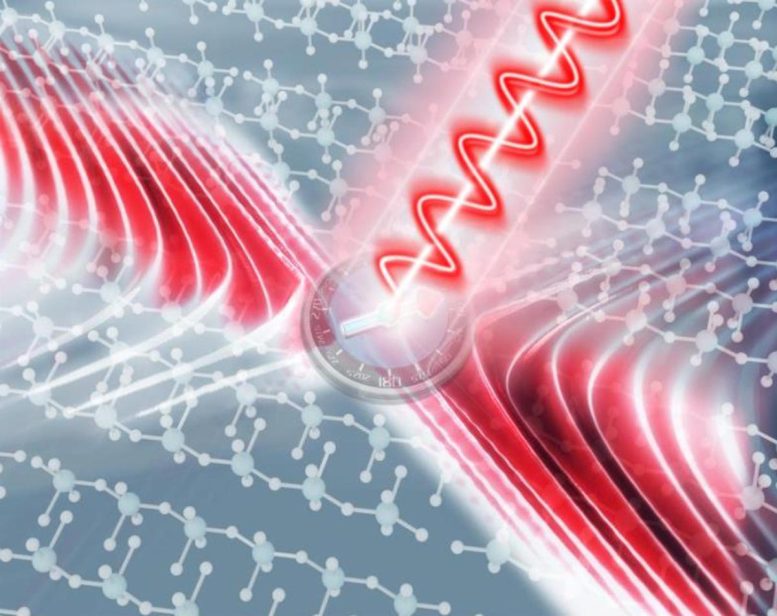
A new method for controlling hyperbolic polaritons in high-symmetry crystals improves directionality, enabling advancements in nanophotonic circuits and reconfigurable optical devices.
Harnessing extremely confined and strongly directional polaritons at the nanoscale is crucial for the creation of integrated nanophotonic devices, circuits, and chips. A lot of research has been conducted on high-symmetry crystals, especially on hyperbolic polaritons (HPs). Nevertheless, the HP propagation within the plane of high-symmetry optical crystals typically displays four mirror-symmetric beams, leading to a decrease in directionality and efficiency of energy transport.
In a new paper published in eLight, a team of scientists led by Professor Xinliang Zhang and Peining Li from Huazhong University of Science and Technology and Professor Zhigao Dai from China University of Geosciences have developed a new technique for in-plane anisotropic excitation and propagation of HPs by controlling the near-field excitation source. Their research could expand the possibilities for manipulating asymmetric polaritons, where it could be applied to reconfigurable polaritonic devices.
Recently, hyperbolic shear polaritons, also known as mirror-symmetry-broken polaritons, have been discovered in low-symmetry monoclinic crystals, which exhibit enhanced directional propagation despite suffering from large losses. The nontrivial asymmetries of these shear polaritons arise from the intrinsic non-Hermitian permittivity tensor of the low-symmetry crystals, which thus are not available in high-symmetry crystals.
Breaking Symmetry in High-Symmetry Crystals
The research team investigated the impact of linearly polarized in-plane sources on generating symmetry-broken HPs with enhanced directional propagation in high-symmetry, low-loss systems. The team theoretically and experimentally demonstrated that controlling the near-field excitation source can configure the excitation and propagation of in-plane HPs. It leads to the breaking of mirror symmetry in HPs without the need for low crystalline symmetry.
The team’s source-configured approach enables the tuning of the asymmetric polariton propagation over a broad frequency range, thereby establishing a new degree of freedom for the dynamic and robust control of light guiding and propagation on the nanoscale. Their results expand the possibilities for manipulating polaritons and can be applied to reconfigurable polaritonic devices for polarization-dependent nanophotonic circuits or optical isolation.
Reference: “Source-configured symmetry-broken hyperbolic polaritons” by Caixing Hu, Tian Sun, Ying Zeng, Weiliang Ma, Zhigao Dai, Xiaosheng Yang, Xinliang Zhang and Peining Li, 7 June 2023, eLight.
DOI: 10.1186/s43593-023-00047-1
Never miss a breakthrough: Join the SciTechDaily newsletter.
1 Comment
Unlocking the Future of Nanophotonics – Breaking Symmetry To Excite Polaritons is an extremely absurd title. Do you understand the difference between low-dimensional spacetime matter and high-dimensional spacetime matter? If you are really interested in science, you can browse https://zhuanlan.zhihu.com/p/624024548.